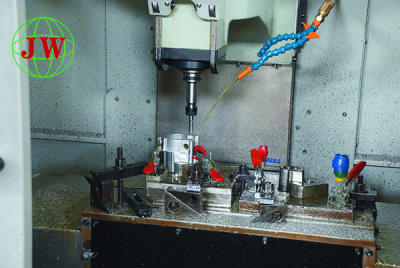
Die Casting: Reinventing Furniture Connectivity and Structural Integrity
2025-05-29 15:36
In the ever-evolving landscape of furniture manufacturing, die casting has emerged as a revolutionary force, transforming the way furniture components are connected and assembled. As the demand for durable, versatile, and aesthetically pleasing furniture continues to rise, die-cast connectorsand structural elements have become the cornerstone of modern furniture design, offering unparalleled strength, precision, and flexibility.
Furniture connectivity is a critical aspect that determines both the functionality and lifespan of a piece. Traditional methods of joining furniture parts, such as screws, nails, or adhesives, often fall short in providing long-lasting stability, especially under heavy use or frequent movement. Die-cast connectors, on the other hand, offer a superior solution. These components are created by injecting molten metal, typically aluminum, zinc, or magnesium alloys, into high-precision molds under intense pressure. The result is a seamless, durable connection that can withstand significant stress and wear over time.
Aluminum alloys are particularly popular in die-cast furniture connectors due to their lightweight yet robust nature. They provide excellent corrosion resistance, making them ideal for both indoor and outdoor furniture applications. For example, die-cast aluminum corner brackets can reinforce the joints of wooden tables and chairs, ensuring stability while adding minimal weight. This is especially crucial for furniture designed for easy mobility, such as folding chairs or portable desks. Zinc alloys, known for their high strength and ability to hold intricate details, are often used for more decorative connectors, like ornate drawer pulls or cabinet handles that double as structural elements.
One of the most significant advantages of die-cast furniture connectors is their precision. The die-casting process allows for extremely tight tolerances, ensuring that each component fits together perfectly. This eliminates the need for excessive adjustments during assembly, streamlining the manufacturing process and reducing production costs. In a large-scale furniture production setting, the consistency and accuracy of die-cast parts can significantly enhance overall efficiency, enabling manufacturers to meet high-volume demands without sacrificing quality.
Moreover, die casting offers unparalleled design flexibility. Furniture designers can create complex geometries and innovative shapes that were previously impossible or difficult to achieve with traditional manufacturing methods. For instance, interlocking connectors with unique profiles can be designed to create modular furniture systems, allowing users to easily assemble, disassemble, and rearrange their furniture according to their needs. This not only caters to the growing trend of customizable furniture but also reduces waste, as individual components can be replaced or reused instead of discarding the entire piece.
The role of die-cast components extends beyond mere connectivity; they also contribute significantly to the structural integrity of furniture. Load-bearing connectors, such as those used in the frames of sofas, beds, and bookshelves, need to be strong enough to support heavy weights without deforming or breaking. Die-cast metal parts, with their high tensile strength and uniform density, provide the necessary support, ensuring the safety and longevity of the furniture. In commercial settings, such as hotels, restaurants, and offices, where furniture undergoes frequent use, the reliability of die-cast structural elements is even more critical.
Sustainability is another area where die casting shines in the furniture industry. Many of the metals used in die casting are highly recyclable. Aluminum, for example, can be recycled indefinitely without losing its properties. By using recycled materials in die-casting, furniture manufacturers can reduce their environmental footprint and contribute to a circular economy. Additionally, the durability of die-cast components means that furniture lasts longer, reducing the frequency of replacements and minimizing waste generation.
Looking to the future, the integration of advanced technologies is set to further elevate the role of die casting in furniture manufacturing. Computer-aided design (CAD) and simulation software allow designers to optimize the shape and performance of die-cast connectors before production, ensuring maximum strength and efficiency. 3D printing technologies are also being explored to create prototypes of die-cast parts quickly and cost-effectively, accelerating the design iteration process.
The rise of smart furniture, which incorporates features like built-in charging stations, sensors, and connectivity modules, also presents new opportunities for die casting. Die-cast components can be designed to house and protect these electronic elements, seamlessly integrating technology into the furniture's structure without compromising its aesthetics or functionality.
In conclusion, die casting has become an indispensable part of modern furniture manufacturing, revolutionizing the way furniture is connected, structured, and designed. Its combination of strength, precision, flexibility, and sustainability makes it the ideal choice for creating high-quality, durable furniture that meets the diverse needs of today's consumers. As the furniture industry continues to evolve, die casting will undoubtedly play an even more significant role in shaping the future of furniture design and production.
Get the latest price? We'll respond as soon as possible(within 12 hours)












